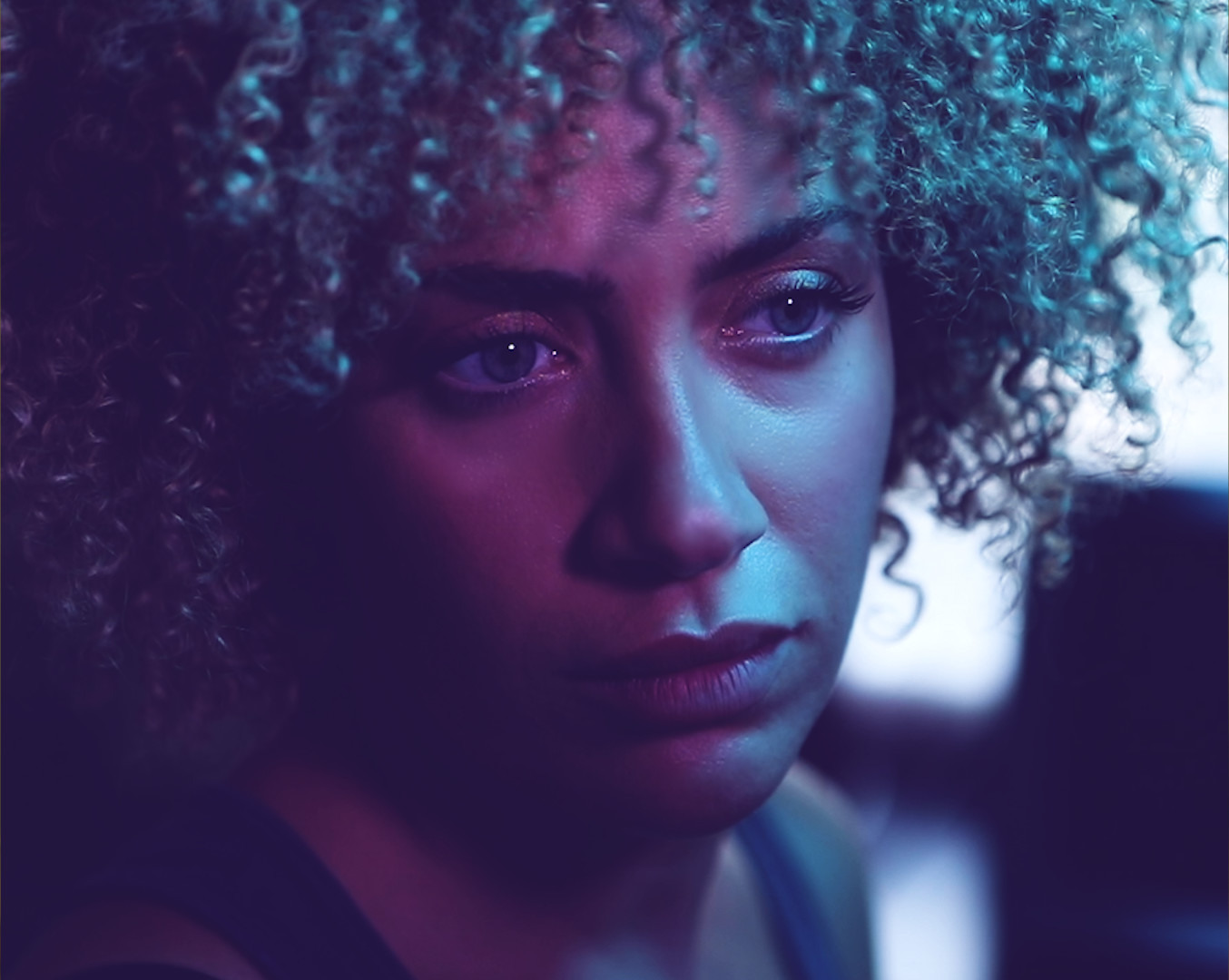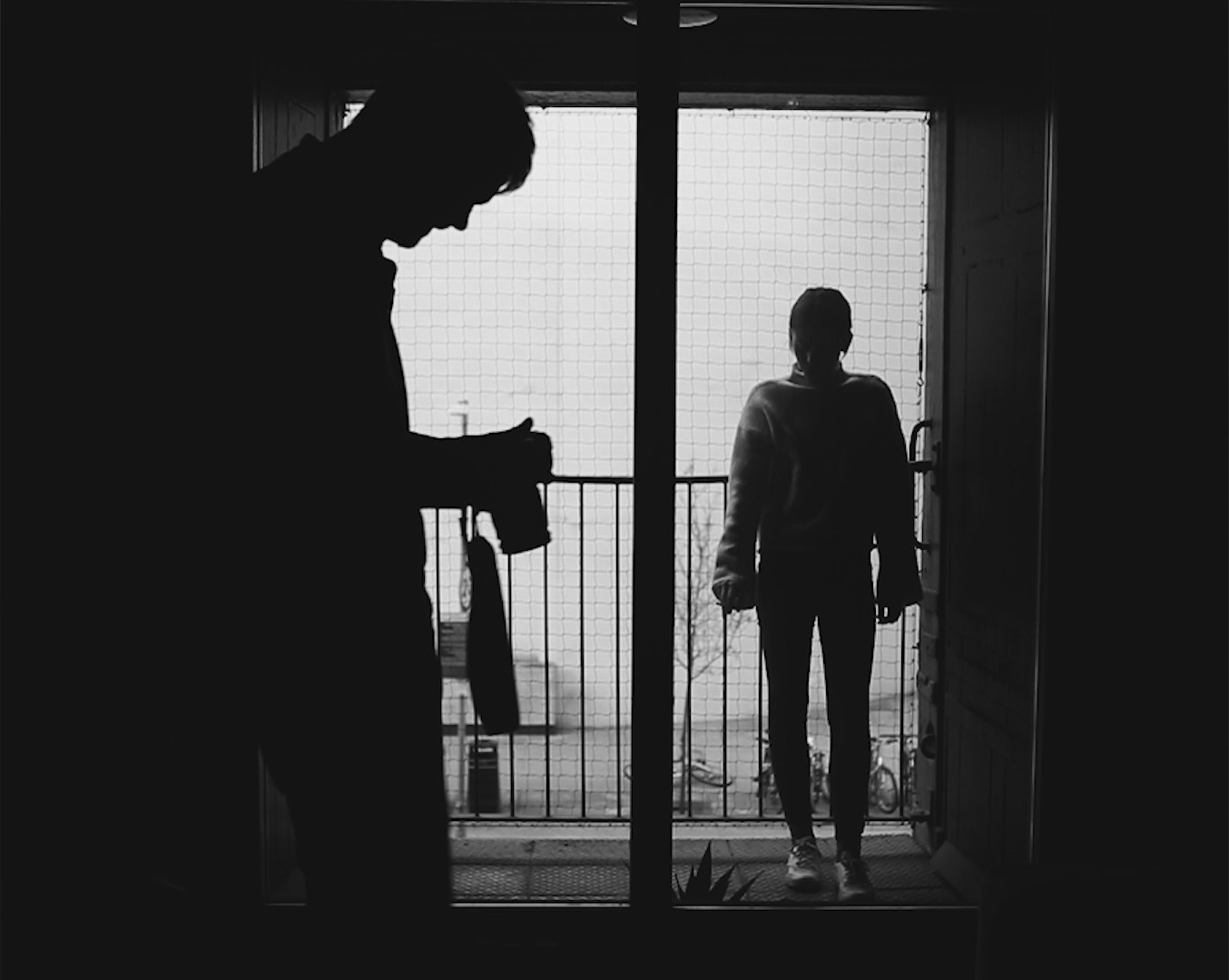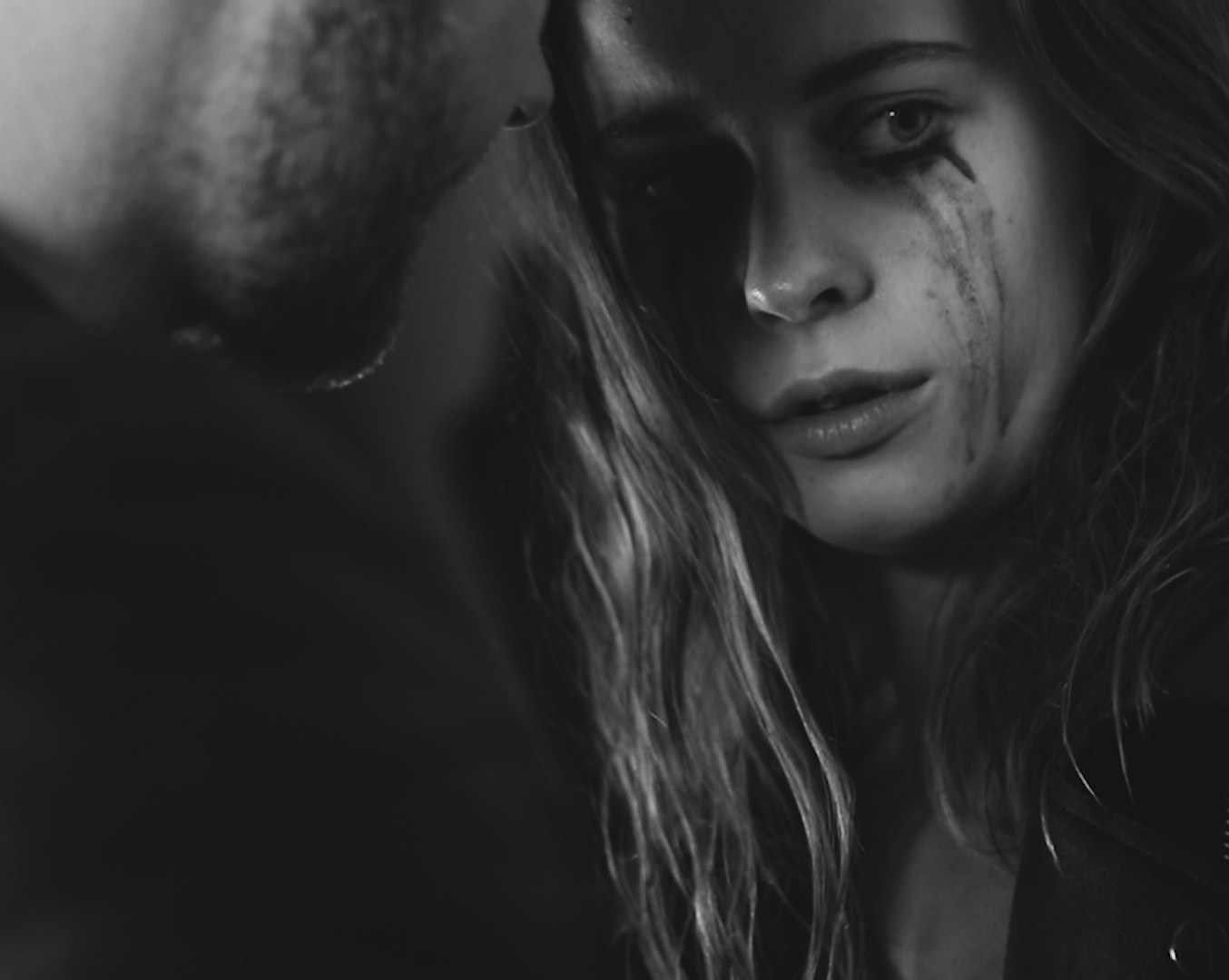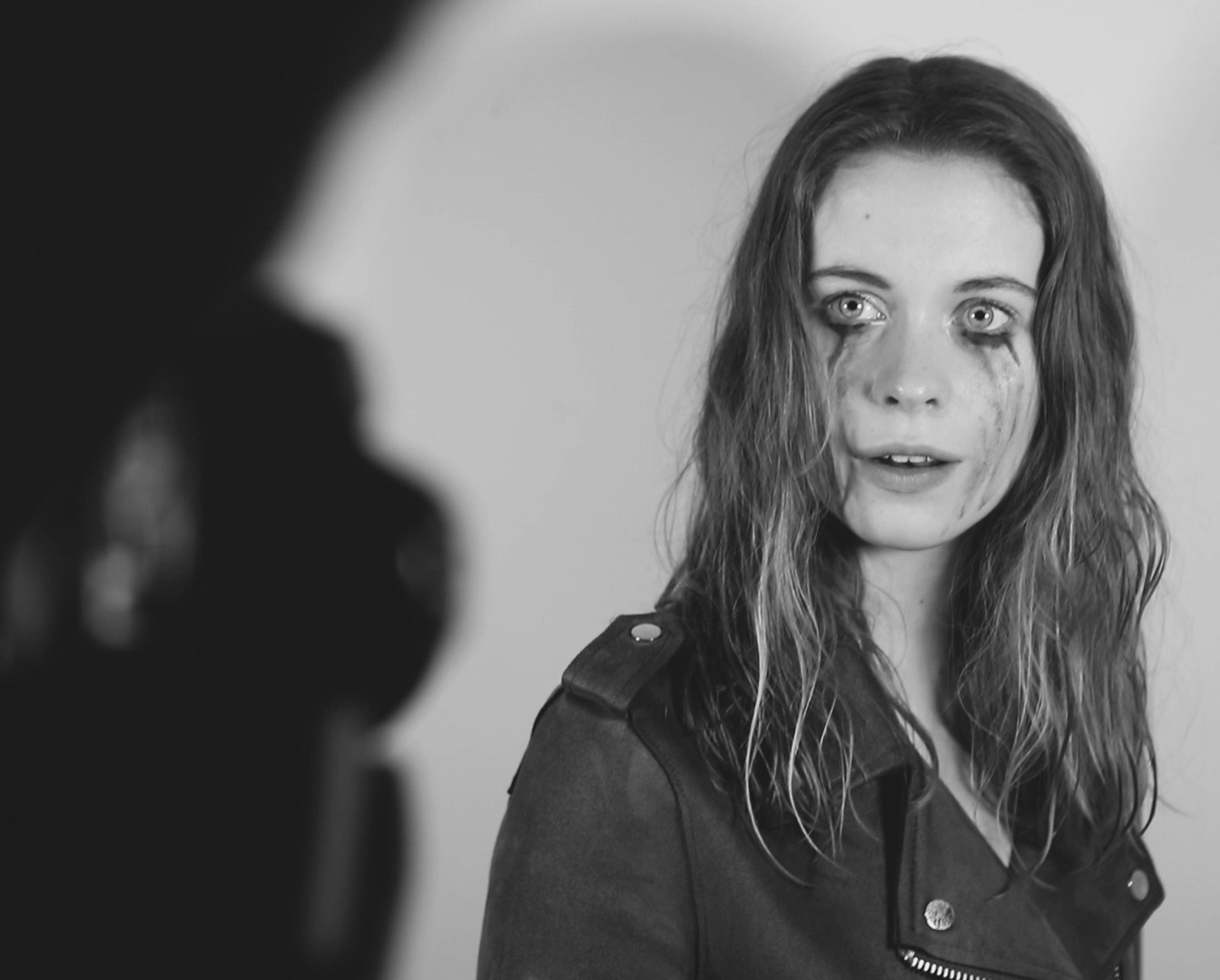
Case Study: Portrait
Keir Siewert discovered how models can be mistreated during photo shoots.
Geplaatst op 9 september 2021Filmmaker Keir Siewert was shocked when he first found out how models can be treated during photo shoots. With his latest film Portrait he hopes to create awareness around this subject, encouraging people to speak up and speak out.
"There seemed to be a consistent pattern of disrespect, rudeness and cruelty coming from an awful lot of people in the industry."
Shocked by behaviour
"Portrait initially came from an entirely innocent conversation. I was doing a photoshoot, chatting casually to the model and I asked her 'what’s the weirdest shoot you ever had?' What she told me shocked me so much and it has stuck with me ever since. She told me a photographer had once taken a break during a shoot to pleasure himself in the bathroom with the pictures he had just taken of her. It was a story I couldn't get out of my head and ultimately became the catalyst for Portrait.
Though I'm predominantly a filmmaker, I've been taking photos for around five years now. One of my major inspirations when I first got into photography was the celebrity photographer Terry Richardson, famed for his outrageous and raw imagery. However, much has come to light over the last decade about his behaviour and it made me start to reconsider and question how that imagery was achieved. This had also been weighing on my thoughts at the time.
With these two things in mind, I started talking about the behaviour of photographers with other models I was working with. While a lot of the stories weren't as extreme, there seemed to be a consistent pattern of disrespect, rudeness and cruelty coming from an awful lot of people in the industry. So I began messaging models I knew and asking if I could formally interview some of them about their experiences and share their stories in a project I was working on. Not everyone said yes. Some models genuinely didn't seem to have negative stories to tell. However, there were a sizeable number of models who were willing to share, with the understanding that their contributions would be anonymous.

Getting more depth into the story
"The first draft was a purely linear story about a model who is being harassed by a photographer, which ultimately felt too basic and lacked the voices of the people I had been talking to. It felt too much like I was just forcing the viewer to watch and be complicit in the abuse. I wanted the lead character to have more agency and I wanted to get more of a feel for the personal experiences of the women I had talked to.
The interesting thing I noticed when talking to the models was that they were often very sarcastic and dismissive of the abusive behaviour. They were disgusted by their abusers, but they didn't come off like pure victims. They were often analytical and self reflective. I wanted to find a way to get more of that kind of emotion into the project. So I came up with a device which allowed actresses to stand in as the voices of the interviewees - and frame it as if they had been having a conversation with the lead character. This way they could also act like a Greek chorus, commenting on the behaviour of the photographer and adding insight into what's happening while the audience is watching the film. I took inspiration from documentary filmmaking and the aim was to connect the story back to a reality beyond the cinema screen.
I also wanted to give the lead character some agency of her own and not make this
purely about watching someone being exploited. This is why I decided to frame it
around her trying to expose the photographer."
Visual style
"Portrait was a real family affair in the end. The whole project was made for about £500. I shot and directed it. My wife Alix Austin produced it. The primary location belonged to the film's composer Thibault Chavanis and was combined with segments shot in my flat and the flat of another friend. This does mean that when the lead character is staring at the photographs of the women the photographer has shot in the film, she's actually looking at another wall in a completely different flat. Near the end she leaves a flat in Canary Wharf and runs out into the corridor of an estate on the other side of London.
I chose to shoot the film in a square aspect ratio because I liked that it created a more claustrophobic image. It gives the women in the film very little space or room. They are always hemmed in by the frame. This is why when the lead stands up to the photographer, the frame expands, giving her more freedom and space. I'm always fascinated by how film formats and aspect ratios can be used as a storytelling device. It's the same reason I chose a mixture of black and white and colour imagery. For me, colour in the film represents truth and a certain euphoric expression. The black and white is the controlled, fake world of the photographer, the colour represents the truth coming to light."

Watch this short at Shift Film Festival
September 17-19, online.
Nuance in characters
"The film was shot in stages. We shot the segments with the photographer and the lead model first, over the course of two days. Will Nash, who was a producer on a previous short I directed, played the photographer Dixon. We talked a lot about how important it was to not play Dixon like he was a villain. I think the temptation is often to play a character like this as evil or gross. But I think what makes Dixon more malicious is his complete lack of self awareness. We talked more about the character as someone who views himself like a pick-up artist, someone who thinks he is suave and cool. So when he's playing power games, he thinks of it like flirting. When he's being forceful, he thinks it's a turn on. In that way we could allow his actions to speak more about him, than over-emphasising the abusive behaviour of the character through the performance.
Sorcha Groundsell has been a friend of ours for a long time and I wanted an actor who wasn't going to play the lead character Rhetta as an empty victim. I wanted there to be some push and pull. There's a constant conflict inside her of how she has to submit to him in order to gain the evidence she wants. The temptation with these types of characters is often to make them wide eyed and one-note victims. I wanted there to be more conflict in her interactions with Dixon. So I needed someone who could play those dimensions.
Once we'd shot the photoshoot segment, I then waited two weeks to shoot the interview segments. This was so I could do an assembly of the photoshoot scenes and show them to the actresses playing the models and they would have a distinct idea of who the character of Dixon was when they were performing.
In the script, the models' thoughts come in the form of short one or two line soundbites, much like they do in the finished film. But I wanted the actresses to feel like they were giving a full performance of a character, not just saying specific lines. So I wrote each of them a monologue so that they could deliver the whole thing organically as one unified performance. Then I took the lines and sound bites I needed, like I would from an interview in a documentary. This was to help make everything feel more natural and representative of the true stories that the script was based on."
Music as a unifier
"The edit was a real balancing act and the producer Alix Austin had a huge hand in
helping find that balance. We tried various versions emphasising different amounts of
commentary from the models, and ultimately found the right ratio.
This was one of the first films I've ever made where I had very little idea of what I wanted the score to be. I always work with Thibault very early on in a production. He's involved from the script phase and we are always in communication about ideas and how the music is going to work with the images. He took inspiration from the shutter sound of the camera and incorporated it into the score, with its harsh sharp sounds in a way that I thought was so creative and menacing. With the film jumping around so much and combining different aspect ratios, a mixture of colour and black and white, I really felt like the music needed to work as a big unifier that married everything together and I don't think it's hyperbolic to say the music is a big reason why the film works.
Though we self funded the film through to postproduction, Genera stepped in when the film was finished and gave us funding so that we could submit the film to festivals. The support we've received has been fantastic and we feel so lucky to have received their backing and the platform of SHIFT at CineSud to bring awareness to the message of our film.
Portrait has been both a labour of love but also a harrowing and eye-opening experience. It's made me very conscious about how I act and I hope it enlightens and affects others as well. There's been occasional contention about how open-ended the conclusion of the film is. The question posed at the end is, 'is that enough?' Will this make a difference?
My hope is that Portrait will have the same effect on others that hearing the model's initial story had on me. I hope it encourages people to have a heightened awareness and support those who are being exploited or mistreated to speak up and speak out."


(c) All visual material is used with the filmmaker's permission.